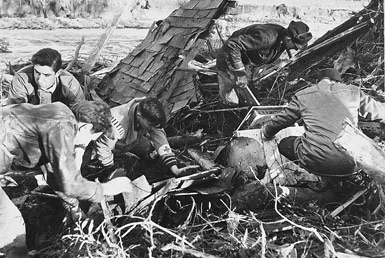Before I start on my blog, I just want to put a link to my daughter Maegan’s blog. Hers is actually well written, informative and interesting, unlike some other blogs that you are reading right now. It is called “lazysundaes” and can be found here .http://lazysundaes.com/
She goes to a different church every Sunday and kind of does a review. Afterwards she rewards herself with the sundae part of lazysundaes. It’s a pretty good reason to eat ice cream. This week’s blog is particularly good and makes me think that I didn’t screw up totally. Give it a read.
I, like millions of others have been following the path of hurricane Irene for the past few days. I can’t believe that New York City Vermont
It occurred to me that when I was just a tiny tot, I survived a hurricane when it hit Toronto

The city and province were totally unprepared for this kind of storm, and the watershed management plans that came into effect after Hazel, changed Toronto
The thing that amazes me is that there was very little information that the people received about the storm. Back then, they relied on phone lines and radio for weather information, and in a severe storm like this those methods of communications would have been knocked out before they could pass on the information. I can’t imagine living without satellites!

The first weather satellite wasn’t launched until April 1 1960 and worked for 78 days. Hard to believe, when you and I can watch storms as they develop in the Atlantic and monitor their progress as they approach landfall. It is compelling television, and the only reality show that I like. I often wonder about the early settlers and of course the natives that wouldn’t even have a hint about what was soon to befall them. I have heard it said that if you pay attention to the natural world around you, then sometimes it will give you hints of what is to happen.
The Native Americans asked their Chief in autumn, if the
winter was going to be cold or not. Not really knowing an
answer, the chief replies that the winter was going to be
cold and that the members of the village were to collect
wood to be prepared.
Being a good leader, he then went to the next phone booth
and called the National Weather Service and asked, "Is this
winter to be cold?"
The man on the phone responded, "This winter was going to
be quite cold indeed."
So the Chief went back to speed up his people to collect
even more wood to be prepared. A week later he called the
National Weather Service again, "Is it going to be a very
cold winter?"
"Yes," the man replied, "it's going to be a very cold winter."
So the Chief goes back to his people and orders them to go
and find every scrap of wood they can find. Two weeks later
he calls the National Weather Service again: "Are you
absolutely sure, that the winter is going to be very cold?"
"Absolutely," the man replies, "the Native Americans are
collecting wood like crazy!"
I think that I will rely on the weather satellites and the Weather Network rather than my powers of observation.
Were caught up in this techno world and we all watch to much CNN as they flog a coming storm like it is going to consume the planet. And in most cases it ends up being a fart in a wind storm, and this is why people question of how bad these storms can be. For me now that I don't have to work in the crappy weather anymore I just stick my head out the window and if it's raining , then brew another pot of coffee! B
ReplyDeleteAside from a surprise hurricane, I totally agree with you. I can't count the number of times I watched the news or weather network, only to find that some dimwit got it wrong. I can understand the guys in TO or Van screwwing it up, but when the local weather guy didn't even bother to look outside...Just pathetic!
ReplyDelete